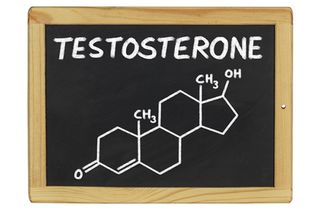
Low-T Therapy: Elixir of Youth… Or Snake Oil? (Op-Ed)

Dr. Gregory Lowe, a urologist at The Ohio State University Wexner Medical Center, contributed this article to Live Science's Expert Voices: Op Eds and Insights.
Advertisements warning men that they may be suffering from "low T" seem to be everywhere. Low T is commercial code for reduced levels of the male hormone testosterone. A decrease in testosterone levels is normal for men, a natural part of aging.
In fact, you might be surprised to know that upward of 30 percent of men in the United States over 60 years old have low testosterone — that's nearly 6 million men.
Perhaps the issue most commonly associated with low testosterone levels is a marked decrease in sexual desire. However, the condition has been linked to a number of overall health problems, including:
- Chronic fatigue or lack of energy
- Insomnia
- Weight gain
- Reduced muscle mass and strength
- Trouble recovering from exercise
- Heart problems
- Osteoporosis
- Trouble with spatial reasoning
- Difficulty concentrating
- Erectile dysfunction
The tricky part about low testosterone is that many of these symptoms can also be signs of other health issues. For example, while you may suspect that your chronic fatigue and lack of energy are a result of low testosterone, they may actually be symptoms of depression. That's why it's so important for men to undergo a physical exam and testosterone supplement trial first, before diving in too deep with testosterone treatments. If the supplement trial doesn't seem to be helping, your doctor may then begin to evaluate if low T is the source of your health issues.
It's also important to note that age is not always a determining factor in low-T patients. In fact, at The Ohio State University Wexner Medical Center, I see low T in patients as young as 20 years old. The good news, though, is that medications aren't always necessary. We can look at lifestyle factors, especially for younger individuals — including stress and dietary habits — to help prevent low T early on.
Most low-T gels or patches are bioidentical, meaning these treatments resemble the exact testosterone that is made in the male body. About 70 percent of low-T patients use this kind of gel for treatment. These gels are usually applied to the chest, upper arms, back, underarms or even the inner thighs once a day. However, only 5 to 10 percent of patients use a patch because it can sometimes lead to skin irritation, and 17 percent will ultimately use injectable therapy, which generally lasts for up to two weeks at a time.
Sign up for the Live Science daily newsletter now
Get the world’s most fascinating discoveries delivered straight to your inbox.
The vast majority of my patients have reasonable expectations when it comes to hormone therapy . Most men don't seek my help because they want to feel like they're 20 years old again — they just don't want to need a nap at 3 p.m. every day.
I would encourage you to see a doctor immediately if you think you might be experiencing the symptoms of low T. This is a pressing issue that can't be self-diagnosed. Trust a urologist to give you the help you need in the safest way possible. Take advantage of the many therapies available for younger patients and developing treatments for older ones — in today's day and age, low-T management is much easier and more effective than ever before.
Follow all of the Expert Voices issues and debates — and become part of the discussion — on Facebook, Twitter and Google +. The views expressed are those of the author and do not necessarily reflect the views of the publisher. This version of the article was originally published on LiveScience.com.
